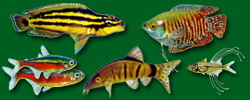- О проекте
- Фотогалерея
- Аквариумные беспозвоночные
- Аквариумные растения
- Аквариумные рыбы
- Альбомы посетителей сайта
- Рептилии и амфибии
- Выставки, встречи, конкурсы
- Магазины, разводни, домашние хозяйства
- Клуб аквариумистов "Хемихромис", г. Петрозаводск
- хозяйство Владимира Челнокова
- Аквариумы Кузьмичева Кирилла
- Дискусоразводня “С.К.А.Т.” С.И.Горюшкина
- Зоомагазин «Бетховен» г.Армавир
- аквариум Лики Аверкиевой
- аквариум Юли из Жаворонок
- аквариум Яны И.
- дома у Михаила Волкова
- зоомагазин Зеленая игуана
- карантинная база Андрея Чурилова
- коллекция Евгения Цигельницкого
- коллекция Константина Шидловского
- разводня Александра Березина
- разводня Владимира Сторожева
- рыборазводня АкваЭкзотика из Лыткарино
- хозяйство Алексея Бринева
- Разные комбинации ламп Hagen
- Сингапурский каталог растений
- надо разбирать
- Библиотека
- Форум
- Правила сайта
- Поиск
Betta species naming isn't settled yet and disputes remain.
Автор статьи считает что Betta imbellis была неверно классифицирована как отдельный вид и ее следует отнести к Betta splendens. Статья на английском языке.
Taxonomic Controversy
Betta species naming isn't settled yet and disputes remain.
-2.jpg) |
Gene Lucas, Ph. D., is a retired biology professor from Drake University and an avid betta fancier. He developed the symbolic system and nomenclature most betta breeders use today. |
Inspired by an article in the June 2008 issue of Scientific American titled "What is a Species?" by Carl Zimmer, I thought it might be appropriate to review some of the things I have believed about one Betta species we are dealing with at this time in history.
The article began by laying out three key concepts. The first point stated the fact that early classification systems were based on observable traits, such as color or scales, followed by the ability of two organisms to interbreed.
The second point focused on DNA and its use in determining genetic relationships over time. The third point highlighted the still unresolved definition of the term "species," and how it might impact the problem of identifying types of animals that should be considered endangered.
Dealing with Innovation
Most hobbyists probably primarily work at the first level because it is the easiest. Some rely on the interbreeding aspects because these are easy enough to understand and may even be tried by hobbyists, should they have an interest. The use of DNA is widely understood and accepted, but few hobbyists have the training, materials, resources and opportunity to work with the problem at that level.
The third concept has arisen as a practical problem and is based somewhat on a variety of specialized conditions or unique reproductive modes that are not generally encountered by hobbyists. I understand that there are some who are worried about reduction of habitat and overharvesting stocks, which may cause some species to be put onto endangered species lists. However, most of the more common aquarium fish are not in short supply and large numbers of them are bred in captivity, so to the average hobbyist this is not a problem.
My own experience has been primarily in breeding domestic Betta splendens. I've then tried to use what I have found to make some sense out of the problem of Betta species and domestic variations. This is what I will be discussing here. Some of this has been presented in earlier columns, but it has been quite a long time, so I think new betta breeders will find it interesting and important.
-1.jpg) |
| The author feels the Betta imbellis has been wrongly classified as its own species and that it should remain B. splendens. |
According to standard practice in the science of taxonomy, of the more than 50 species now described under the genus Betta many have been classified in a less than appropriate manner. This seems incredible to me because few of these species are available to fish hobbyists or are ever even seen by most of us. I use the term "less than appropriate" because there are protocols to be followed when naming species that are often only marginally followed. Unfortunately, this has resulted in their acceptance (or lack of the same) and in continuing confusion rather than clarification of how the genus Betta might be classified.
Problems with Current Names
As most of my friends in the betta world are aware, I have long insisted that some of the Betta species named in recent times should not be recognized, because I believe they are merely the renaming of species that have been previously described. My prime suspect is the species described by Werner Ladiges, Ph.D., in 1975. Ladiges named it Betta imbellis, but I feel it should not have been so designated when by various criteria it seemed identical to the previously described B. splendens. Betta splendens was described in 1909 (published in 1910) by C.T. Regan.
Reasons for my Challenge
My first problem is with the history of Betta splendens, which earlier had been known as a variant of B. pugnax or as B. trifasciata. An artist's technical rendering that shows the fish quite accurately was published as early as 1849. I have a reprint in my files with the notation 1907 on it, though unfortunately not the publication, that has a nearly photographic illustration of a pair of Betta sp., which I am sure viewers of today would identify as B. imbellis.
The title of the article identified them as "Betta pugnax (Cantor) var. trifasciata (Bleeker)." This same illustration was used repeatedly for a number of years in the German aquarium journal Wochenschrift fur Aquarien-und Terrarienkunde. An article in a 1924 issue identifies the same fish as Betta splendens.
After Regan (1910) exclusively identified the fish as B. splendens, masses of pictures (drawings, paintings and photographs — published mostly in black-and-white but some in color) were produced throughout the period between 1849 and 1975 (126 years!). Up until 1927, when domesticated varieties were imported to the Western World, all references identified them as such.
Subsequently, until the 1975 report, all of them were still identified as B. splendens. Another substantial period of time, from 1910 to 1975 (65 years), passed before anyone decided to identify a population variant as a new species. I think what has happened since the description of B. imbellis is rather astounding. Almost every fish of the type that was universally B. splendens before is now almost universally called B. imbellis,
Far-Fetched Classification
To me, it seems a stretch to identify it as being different in any way. The predominant clue seems to be that the term "imbellis" refers to their peaceful nature. If that is a critical criterion, then I think not enough consideration was given to the assorted geographical or cultural factors that might have influenced the nature of "wild" populations.
The range these fish can be found in stretches from Thailand and Laos in the north (about 15 degrees above the equator) to Sumatra in the south (about 5 degrees below the equator). This area includes Laos, Thailand, Cambodia, at least the southern portion of Vietnam, peninsular Malaysia, Singapore and the islands associated
with Sumatra (the only part of Indonesia from which Betta sp. similar to B. splendens have been collected). This represents a territory of nearly 1,000 miles (from north to south) by perhaps 500 miles (from east to west), with geographical features that would easily allow some degree of isolation between populations.
Variation Explanations
Let's look at some possibilities for variable populations within a limited range:
- An original wild population.
- A long-term domesticated stock with enhanced size, altered anatomy, enhanced aggressiveness, etc.
- Feral populations descended from escaped or discarded fighting stocks.
- A long-term population of domesticated stock bred for form, finnage and color.
- Feral populations descended from escaped or discarded fancy Betta splendens that probably derived from fighting stocks and probably retain much of the deviant traits from the original wild stocks.
- Various stocks which may have arisen from hybridization to various combinations of any of the above.
We will delve deeper into this issue in a future column and try to sort out the confusion.
»
- просмотров: 5033

